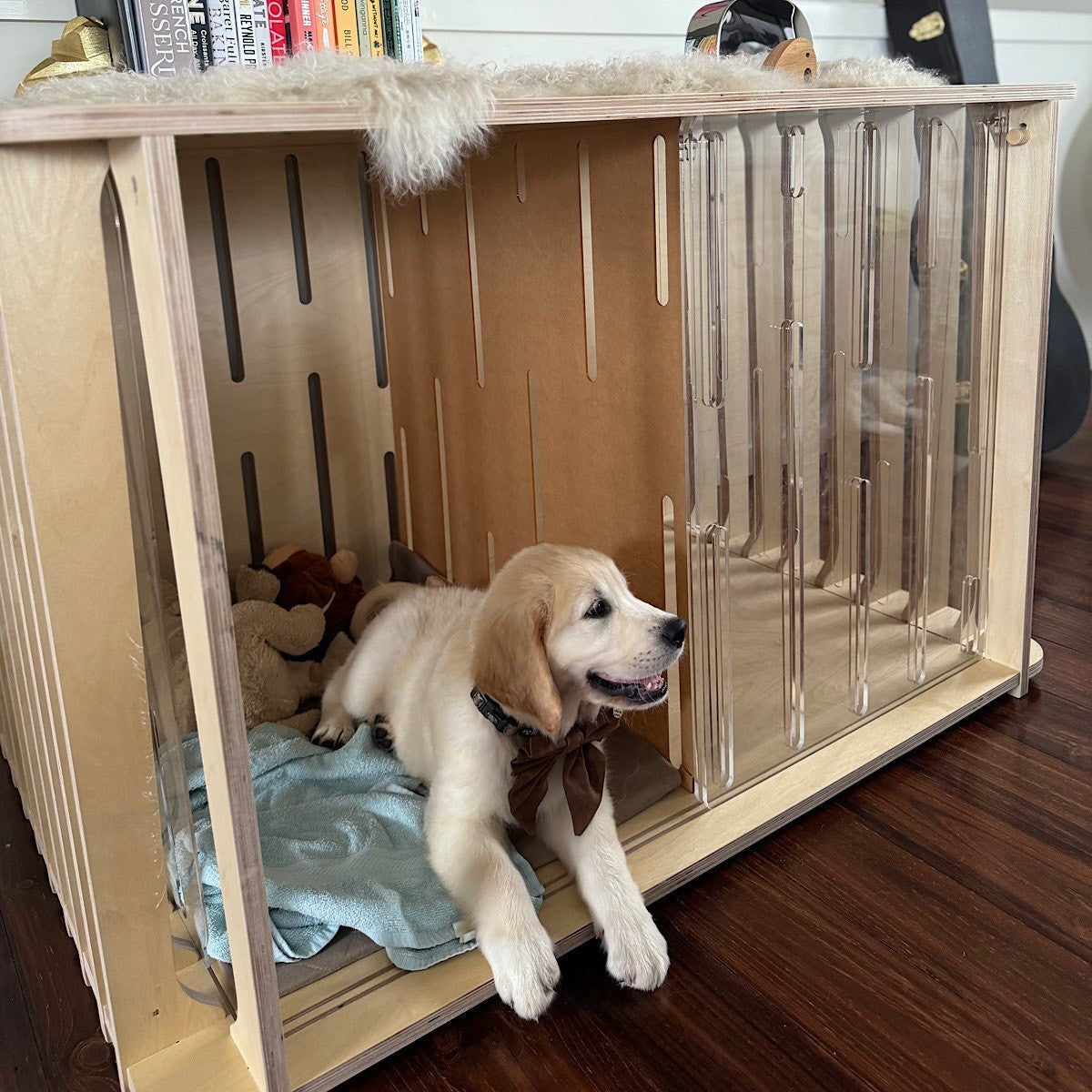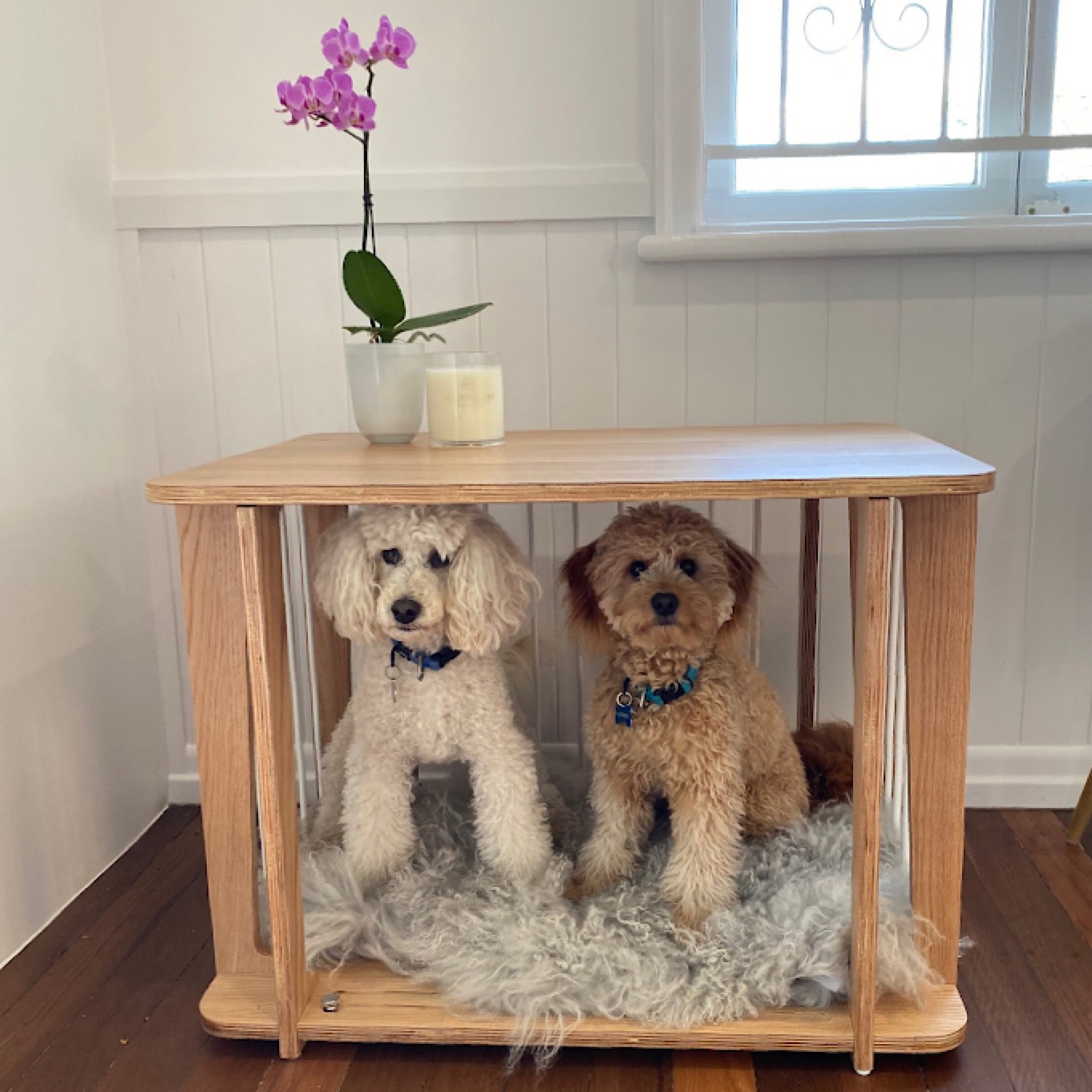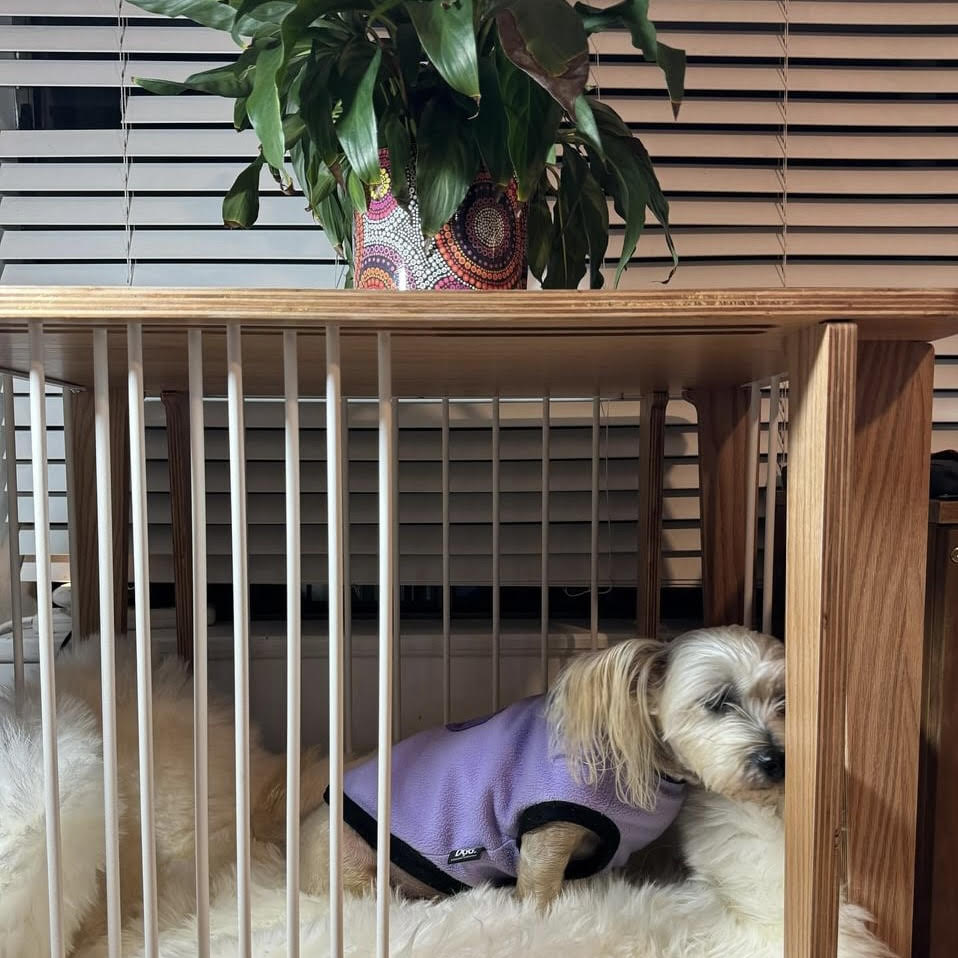
Mastering Puppy Crate Training: Expert Tips for Success
Have you welcomed a new furry companion into your family this holiday season? To ensure they feel safe and comfortable breeders, vets and dog behaviourists all recommend puppy crate training. We've collated their top recommendations for helping your puppy love their crate!
Experts unanimously agree that introducing a dog crate at a young age is beneficial. Making it an engaging experience for your pup is key to building positive associations.
1. Make it a Game: Use food or toys as motivation for your pup to explore and relax in the crate. Take your time and repeat the process to build comfort gradually.
2. Gradual Introduction: Start with short periods, allowing your puppy to freely enter and exit the crate. Incorporate mealtime within the crate to create positive associations.
3. Positive Reinforcement: Treats, toys, and praise play a significant role. Start with short stays and reward calm behavior inside the crate.
The Step-by-Step Approach to Crate Training
Experts emphasize patience and a step-by-step approach:
- Slow Steps, Small Increments: Increase time spent in the crate gradually, always maintaining a positive environment with treats and toys.
- Mealtime in the Crate: Feeding your puppy in the crate helps create a positive association with the space.
- Incremental Door Closures: Start by closing the door for short durations, gradually extending the time as your pup becomes more comfortable.
Expert Strategies for Long-Term Success
To ensure your pup stays content in their crate:
- Positive Associations: Focus on creating a safe and inviting environment in the crate.
- Routine and Comfort: Keep the crate accessible at all times and allow the puppy to choose to be in it.
- Short Confined Periods: Confine your pup for short periods, particularly when they're calm or sleepy, gradually increasing these durations.
Expert Insights and Practices
Experts from various backgrounds and experiences underscored several common strategies:
- Start Young: Introduce the crate early, making it a comfortable, safe place.
- Positive Reinforcement: Use treats, toys, and praise consistently.
- Gradual Progression: Start with short stays and slowly increase time spent in the crate.
- Mealtime in the Crate: Feeding puppies in the crate fosters positive associations.
- Positive Associations and Comfort: Ensure the crate is a relaxing space with toys, treats, and comforting items.
- Incremental Door Closures: Gradually introduce closed-door sessions once your pup is comfortable being in the crate.
Conclusion
Mastering puppy crate training requires patience, consistency, and a positive approach. Each pup is unique, so adapt these expert tips to suit your furry friend’s personality and needs. Remember, the goal is to create a safe, comfortable space where your puppy feels secure and content.
Are you currently crate training your puppy? Share your experiences and any valuable tips in the comments below!




Leave a comment
This site is protected by hCaptcha and the hCaptcha Privacy Policy and Terms of Service apply.